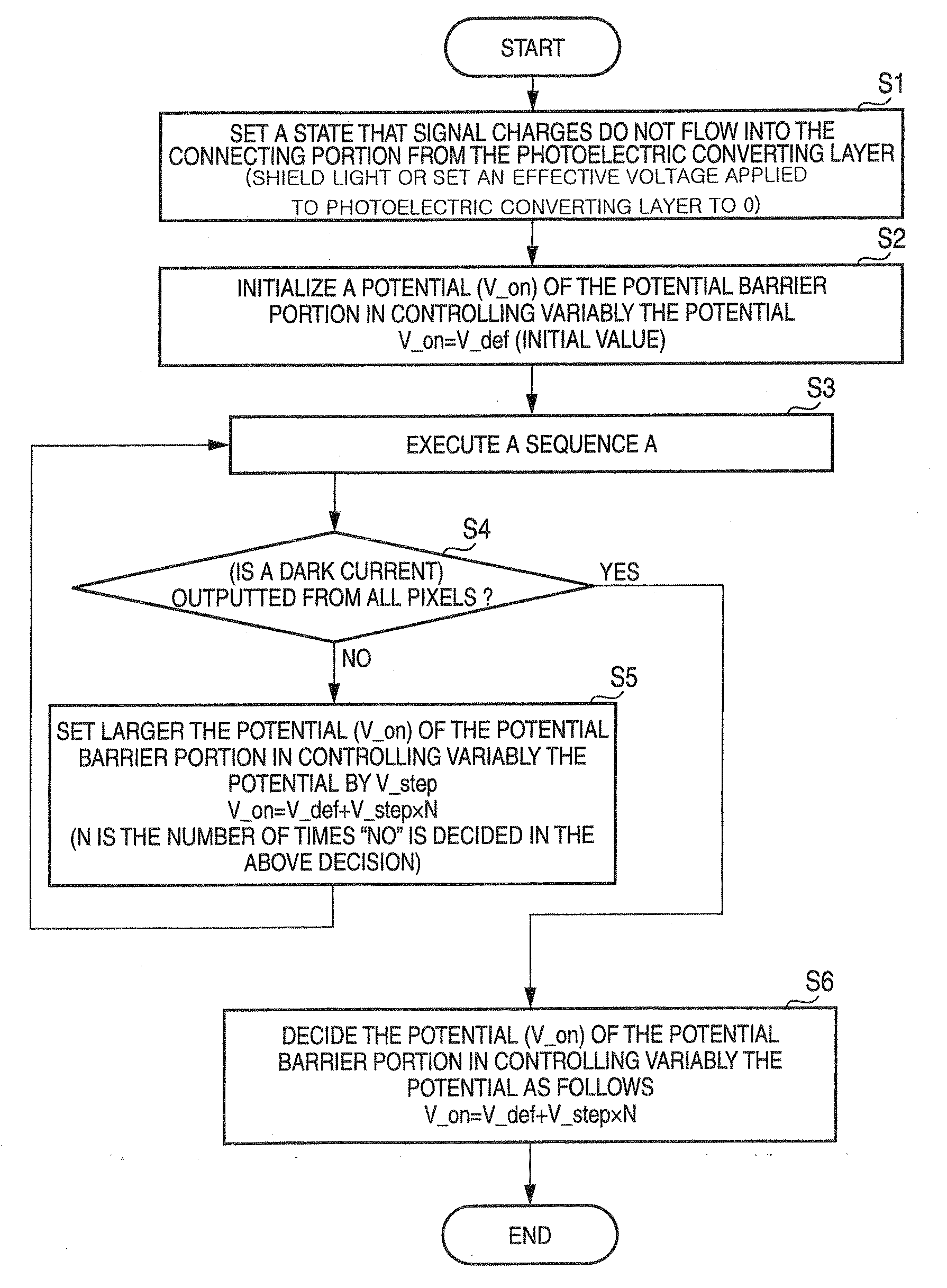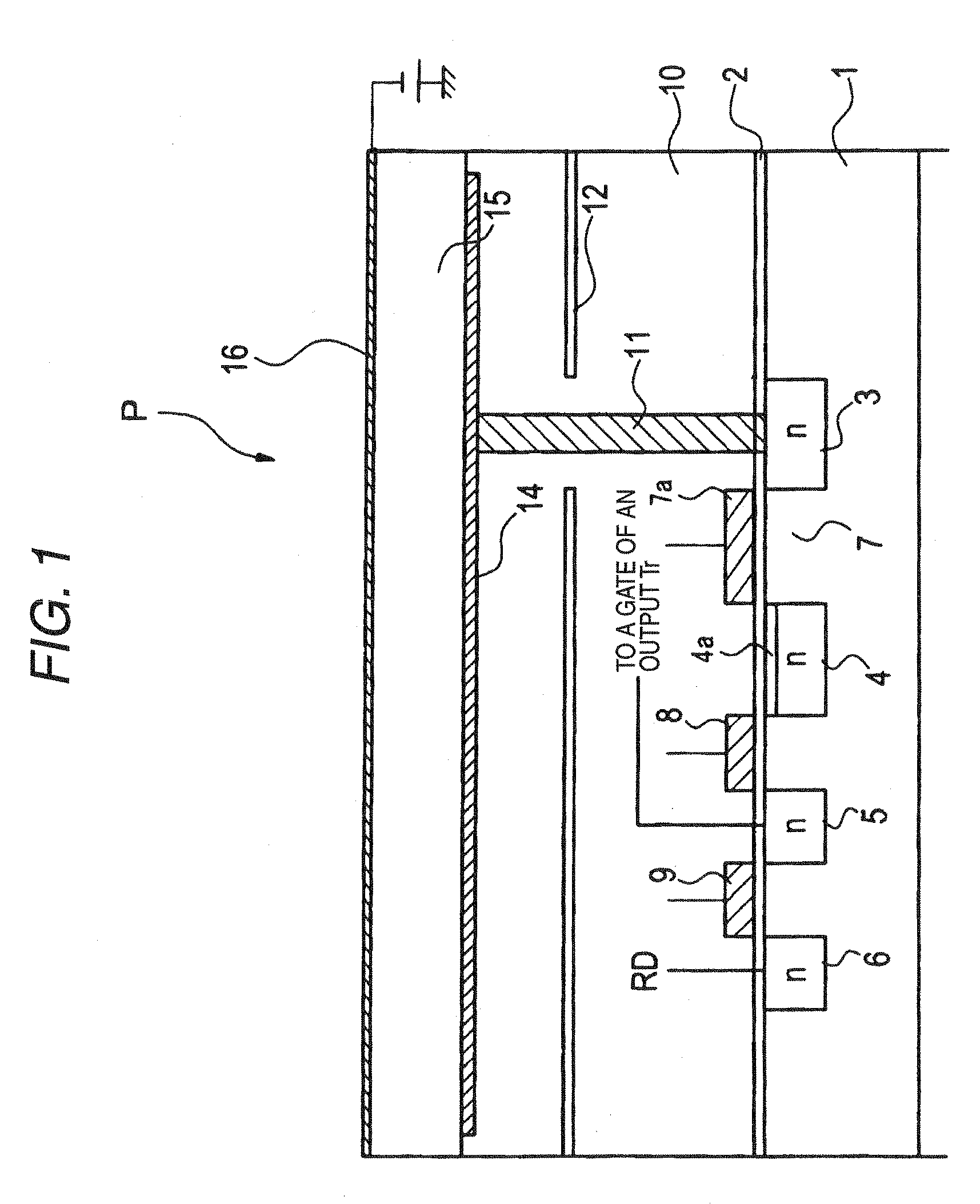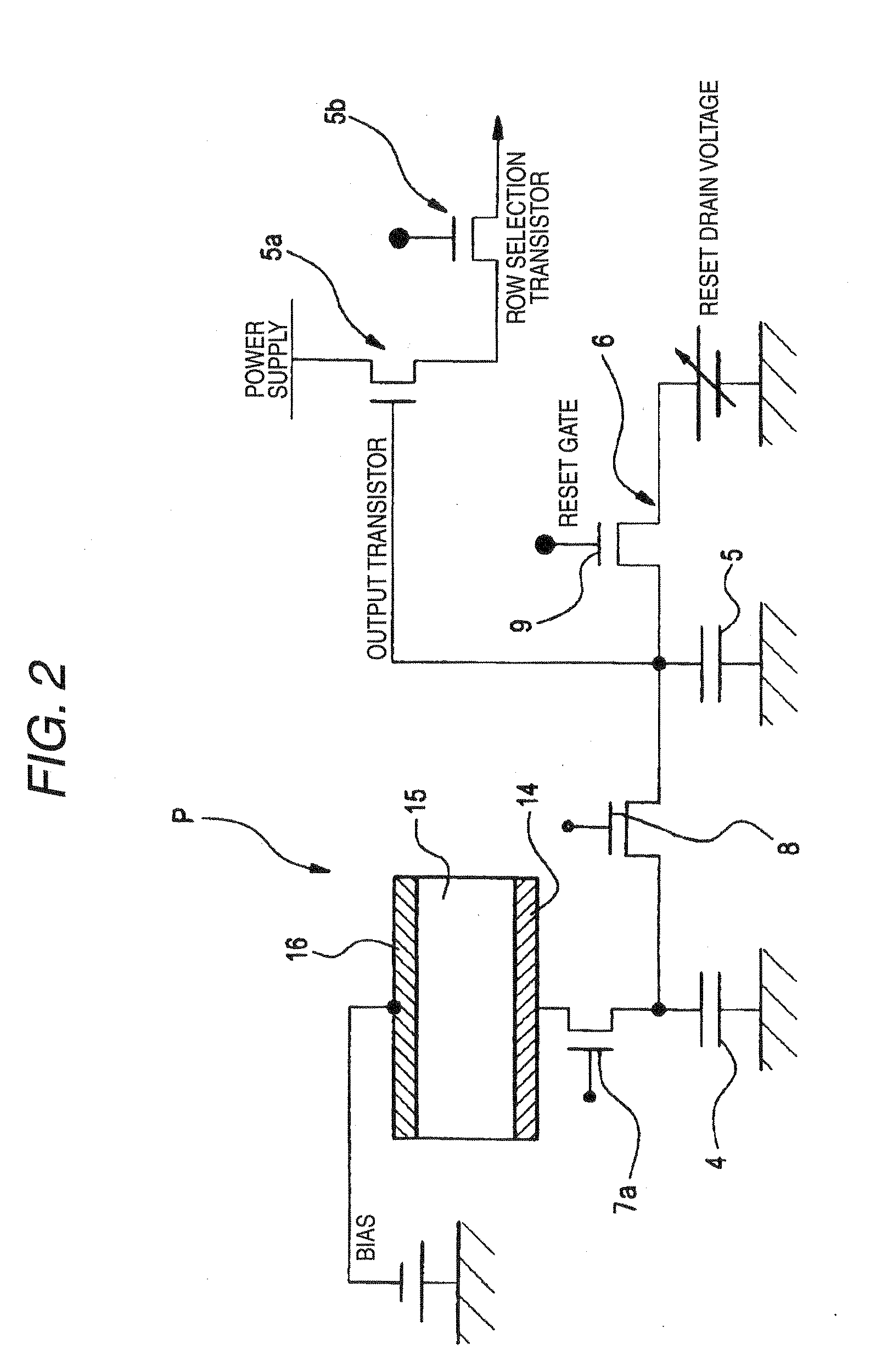Imaging device and method of driving solid state imaging element
a solid-state imaging and imaging element technology, applied in the direction of television system scanning details, radio control devices, television systems, etc., can solve the problems of inability to execute linearity corrections simply based on correction information, process cannot catch up with the signals that are being output from solid-state imaging elements sequentially, etc., to prevent the generation of residual charges in the connecting portion, improve the accuracy of decision making, and prevent lag
- Summary
- Abstract
- Description
- Claims
- Application Information
AI Technical Summary
Benefits of technology
Problems solved by technology
Method used
Image
Examples
first embodiment
[0037]FIG. 1 is a schematic sectional view showing one pixel of a solid state imaging element as a first embodiment of the present invention. The solid state imaging element is constructed by arranging one pixel shown in FIG. 1 in plural on the same plane one-dimensionally or two-dimensionally. While taking as an example such a configuration that one pixel shown in FIG. 1 is aligned two-dimensionally in the row (horizontal) direction and the column (vertical) direction perpendicular to the row (horizontal) direction, explanation will be made hereunder.
[0038]The solid state imaging element shown in FIG. 1 contains a p-type silicon substrate 1 as a semiconductor substrate (referred to as a “substrate 1” hereinafter), and a photoelectric converting element P stacked over the substrate 1 via a gate insulating film 2 and an insulating layer 10.
[0039]The photoelectric converting element P is constructed to includes a lower electrode 14 formed on the insulating layer 10, a photoelectric co...
second embodiment
[0094]In the first embodiment, the reset noise can be eliminated exactly by accumulating temporarily the charges generated in the exposure period in the first charge accumulating portion 4. However, when an accuracy in eliminating the reset noise is not requested, the driving system in the first embodiment can be employed even in the configuration in which the first charge accumulating portion 4 is not provided.
[0095]The solid state imaging element that is installed into the imaging device of the second embodiment may be constructed by replacing the transfer gate 8 with the reset gate 9, replacing the second charge accumulating portion 5 with the reset drain 6, and connecting the gate of the output transistor to the first charge accumulating portion 4, in the solid state imaging elements shown in FIG. 1. Here, in the case of such configuration, the p-type impurity layer 4a formed on the surface of the first charge accumulating portion 4 should be deleted.
[0096]An operation of the im...
PUM
 Login to View More
Login to View More Abstract
Description
Claims
Application Information
 Login to View More
Login to View More - R&D
- Intellectual Property
- Life Sciences
- Materials
- Tech Scout
- Unparalleled Data Quality
- Higher Quality Content
- 60% Fewer Hallucinations
Browse by: Latest US Patents, China's latest patents, Technical Efficacy Thesaurus, Application Domain, Technology Topic, Popular Technical Reports.
© 2025 PatSnap. All rights reserved.Legal|Privacy policy|Modern Slavery Act Transparency Statement|Sitemap|About US| Contact US: help@patsnap.com



